
Programme
Time mentioned corresponds to the Central European Time (CET)
Please follow possible updates
13:30 - 13:35
Welcome and introduction
trackOrder: 10
sessionThemeOrder: 1010
time: 13:30 - 13:35
13:35 - 13:40
Opening speech - part I
trackOrder: 10
sessionThemeOrder: 1010
time: 13:35 - 13:40
Participants

Xavier Bettel
Prime Minister of Luxembourg, Minister for Communications and Media and for Digitalisation
13:40 - 13:45
Opening speech - part II
trackOrder: 10
sessionThemeOrder: 1010
time: 13:40 - 13:45
Participants

Johannes Hahn
European Commissioner for Budget and Administration
13:45 - 13:55
Opening speech - part III
trackOrder: 10
sessionThemeOrder: 1010
time: 13:45 - 13:55
Participants

Hilde Hardeman
Director-General of the Publications Office of the European Union

Veronica Gaffey
Director-General for Informatics at the European Commission
13:55 - 14:45
Keynote speech - The web of data: how are we doing so far
trackOrder: 10
sessionThemeOrder: 1010
time: 13:55 - 14:45
Participants

Elena Simperl
Professor of computer science at King’s College London
Track 1
Multilingual reference data
14:45 - 15:00
Multilingual UI displays in Vocabulary Management
trackOrder: 20
sessionThemeOrder: 2010
time: 14:45 - 15:00
Participants

David Clarke
Co-founder and CEO of Synaptica
Organizations working across international borders, time zones, and office and work from home locations require the ability to collaboratively develop multilingual controlled vocabularies. These vocabularies must be accessible from anywhere at any time.
Synaptica, a taxonomy and ontology management software vendor, has several clients who require access to shared multilingual vocabularies by teams in dispersed geographical locations. These teams require the ability to work on vocabularies anywhere and at any time to translate and map vocabulary concepts. When viewing vocabularies, taxonomy editors must be able to see concepts in hierarchical tree and workspace views supporting more than one language with the option to view concepts in many languages in once. They also need the ability to search for preferred and alternative labels and properties across languages.
Working with clients, Synaptica has developed several ways of searching for and viewing concepts and properties in multiple languages to support cross-vocabulary development, translation, and mapping.
15:00 - 15:15
Deep Semantic Hybrid Technologies for Information Superiority
trackOrder: 20
sessionThemeOrder: 2010
time: 15:00 - 15:15
Participants

Gianluca Sensidoni
Sales & Bid Manager, Expert.ai
Expert.ai is a technology company focused on Natural Language Understanding (NLU) by means of deep semantic algorithms based either on Ontology/Taxonomy or Machine/Deep learning (Hybrid AI). The goal is to extract entities, relations, categories, emotions, stylometric attributes, .... from unstructured contents in different domains (Intelligence and Security, Health, Energy (ESG), Finance, …...) and languages.
This proposition focuses on discovering deep semantic attributes from unstructured contents and inserting them into Decision Supporting Systems (DSS) in order to reach Information Superiority and enhancing the end-userʼs reasoning and decisions.
Extracting standard semantic entities and complex ones, such as Emotions and Stylometric attributes, enables the understanding of events in advance and helps the prevention of ʻparticularʼ future actions. The same extraction can be used to analyse historical events in order to understand relevant attributes and use them to face similar and future events.
Live demos are available here: https://try.expert.ai and https://www.intelligenceapi.com/ . You can test also our last behavioural algorithms such as Emotions and Stylometric analysis.
15:15 - 15:30
Focusing terminology search results by setting EuroVoc domain preferences in Juremy.com
trackOrder: 20
sessionThemeOrder: 2010
time: 15:15 - 15:30
Participants

Tímea Palotai-Torzsás
Juremy Ltd., Hungary

Robin Palotai
Juremy Ltd., Hungary
Focusing the topic is very important in EU institutional and legal translation. The risk of choosing a target language equivalent from the wrong context can be high, particularly for shorter query expressions. As the developers of Juremy.com, we implemented a way to solve this issue by focusing our searches to specific domains.
Instead of the seemingly obvious option to filter results by domains however, we chose another solution: Juremy ranks terminology hits by EuroVoc domain preferences. We found that there are two main issues related to filtering topics. First, it is often ambiguous to decide which EuroVoc topic to choose when trying to find the most accurate translation of a term. Second, it is top priority for linguists to find as many relevant hits for a term query as possible.
To resolve this, we implemented the Topic preference setting on Juremy’s user interface. When positive or negative preferences are set, Juremy will return preferred results in the first place, but would still fall back to other topics if there aren’t any preferred ones.
Preferring a EuroVoc domain will automatically prefer all IATE entries or EUR-Lex documents tagged with those domains or any of its constituting concepts.
In terms of visuals, we provide different customization options on the UI. Users can choose to display just the domain icon, or also the domain name, or also the specific concept within the domain. It is easy to set topic preferences by clicking on the coloured labels in each hit segment.
15:30 - 15:45
Top 6 Things You Need to Know about Localisation Efficiencies
trackOrder: 20
sessionThemeOrder: 2010
time: 15:30 - 15:45
Participants

Rahel Anne Bailie
Executive Consultant, ICP
The need to control vocabulary at the source is a strong part of enabling efficiencies around localisation of content. Yet traditional business models create silos with content creation upstream and translation downstream - and reference data management is in a completely different stream. In this presentation, Rahel Bailie discusses how cross-silo processes can ensure that localisations work in the target market. Semantically structured content connect content and data, and adding analytics becomes the gateway to measuring effectiveness and monitoring business intelligence.
Learning outcomes:
• Looking for logical points to involve localisation expertise
• The critical differences that can help you deliver better content
• How to use machine learning and similar technologies responsibly
15:45 - 16:05
Break
trackOrder: 20
sessionThemeOrder: 2010
time: 15:45 - 16:05
Using reference data and semantics - From theory to practice
16:05 - 16:20
How to create, maintain, disseminate and visualise multilingual reference data at a corporate level?
trackOrder: 20
sessionThemeOrder: 2020
time: 16:05 - 16:20
Participants

Anikó Gerencsér
Knowledge Management Assistant, Publications Office of the European Union, Luxembourg
Lucy Walhain
Knowledge Management Assistant, Publications Office of the European Union, Luxembourg
How to create, maintain, disseminate and visualise multilingual reference data at a corporate level?
Reference data need not only to be created, updated and maintained, but also shared, visualised and aligned in a modern way to enhance interoperability.
The Publications Office of the EU maintains and publishes numerous reference datasets: authority lists (such as list of countries, corporate bodies, currencies), thesauri (e.g., EuroVoc), code lists, taxonomies, and ontologies. Reference data is published on different platforms and are publicly available for reuse in all 24 official EU languages.
This presentation will focus on the benefits of creating reference datasets as well as on the main challenges that the Publication Office tries to overcome. While the aim of establishing a common tool and a centralised service at a corporate level is the reusability and interoperability of reference data amongst all EU institutions, multiple challenges need to be addressed. What data standards or guidelines can help create and maintain multilingual reference datasets? What are the components of the professional community at stake? Which technologies are used? Do we have commonly agreed orientations? Which training is provided? How could a common data model be adopted as largely as possible? These are some of the questions faced.
16:20 - 16:35
Taxonomy interoperability - How to make it work well
trackOrder: 20
sessionThemeOrder: 2020
time: 16:20 - 16:35
Participants

Helen Lippell
Taxonomy consultant
Many organisations manage multiple taxonomies or vocabularies, and it is not realistic or even desirable for there to be ʻone single taxonomy that rules them allʼ, as this is unworkable and won't meet the needs of the different users or systems of the vocabularies.
Therefore mapping taxonomies is often proposed as a way of gaining interoperability between systems, allowing data to be moved or processed seamlessly. When it is done well, and done sustainably, it is a powerful way of increasing the usefulness of individual systems and databases, and improves the effectiveness of the organisation's data management. However, there are risks to it being done badly, such as bad data quality, failed integrations and risks to the products and services underpinned by this data.
This short presentation is aimed at a general audience. It does not attempt to solve any possible problems that could arise, but rather to give some pointers and ideas for people to explore when tackling their own unique situations.
It will cover:
-
Different basic models;
-
Ownership, governance and maintenance;
-
Ways to compare vocabularies to be mapped.
16:35 - 16:50
Business Communication Skills in international AI-based solutions
trackOrder: 20
sessionThemeOrder: 2020
time: 16:35 - 16:50
Participants

Agata Majchrowska
AI & Data Expert, IA/CA A&R Research Scientist, Research Lab CODR.PL, WWSIS , Poland

Robert Majchrowski
Analyst, Student at the University of Leeds
Many of us do know the background for sector-specific solutions and cultural differentiation. However, while using multilingual references, one may wish to apply the most appropriate solution directly to improve access to all available public information.
Consequently, one would definitely like to avoid future multi-version updates for one system. What should one know about communication skills? How may the behavioural factor enhance the solutions and interfaces? Which organisational attributes and organisational aspects play an essential role in developing searchable open data and knowledge-sharing databases?
The entirely holistic approach may be designed based on research studies on communication, software development, AI-related rules, regulations and best practices that both software engineers and solution architects could probably regard.
16:50 - 17:10
Break
trackOrder: 20
sessionThemeOrder: 2020
time: 16:50 - 17:10
17:10 - 17:25
Gearing up for success with multi-lingual voice search using structured content
trackOrder: 20
sessionThemeOrder: 2020
time: 17:10 - 17:25
Participants

Arpita Maity
Director, Product Marketing, RWS
What is the next big shift in the customer experience landscape? Voice-activated search! Semantic search is the future for search engines, and people search for topics using questions. In this presentation, youwill learn voice basics and the specific things you need to do to get your content ready to drive more engagement on the web. Discover how to better align offerings to customer needs using voice-activated search.
17:25 - 17:40
Architecting an Artificial Intelligence Ontology System
trackOrder: 20
sessionThemeOrder: 2020
time: 17:25 - 17:40
Participants

Ann Clark
AI Ontologist, Nearmap company, Australia

Zeph Yap
Nearmap company, Australia
Artificial Intelligence (AI) requires large amounts of labelled training data for models to be accurately trained. In semantic segmentation, each pixel is assigned a value based on the class or classes it belongs to. On the other hand, an ontology is a collection of classes, their properties, and the relationships between them. Semantic segmentation, then, lends itself naturally to integration with an ontology, where insights from direct and indirect relationships between classes can be used to enhance training data.
Recently, Nearmap introduced an ontology system which integrates directly into our proprietary labelling software, linking labelled data directly to definitions. Preliminary work on the system has already helped identify conflicts between labels in the production dataset.
Along the way, a few challenges unique to managing Nearmap’s large geospatial dataset had to be overcome. This presentation will discuss the solution which handles reproducibility, version tracking, multiple perspectives in source imagery, and the storage of image examples as part of the class definitions.
17:40 - 17:55
Localization and Standard Language Codes
trackOrder: 20
sessionThemeOrder: 2020
time: 17:40 - 17:55
Participants

Meg Morrissey
Co-Chair of the Language Metadata Table (LMT); Senior DAM Architect and Head of Professional Services for MediaValet
Localization is where it’s at! Standardized language codes are needed to ensure localization success. The LMT (Language Metadata Table) provides the single-source solution for language codes, while adhering to the ISO standard IETF BCP 47. Initially conceived for the broadcast and media industry, the LMT is applicable anywhere language codes are needed. The LMT was selected as the language code standard of choice for the Cloud Localization Blueprint (CLB) that was recently presented in Amsterdam at the IBC Accelerator.
The LMT has over 270 language codes, and more codes are in the process of being added. This presentation will provide the current state of where the LMT is today, and where it is headed as adoption by organizations from content creators to distributors and others increases.
17:55 - 18:00
Closing
trackOrder: 20
sessionThemeOrder: 2020
time: 17:55 - 18:00
Track 2
Semantic technologies in our everyday lives - Tangible impacts
14:45 - 15:00
The Europe Direct Contact Centre Knowledge Base
trackOrder: 30
sessionThemeOrder: 3040
time: 14:45 - 15:00
Participants

Dennis Diefenbach
CEO, The QA Company
The European Direct Contact Centre (EDCC) is run by the European Commission. It answers any question from the public about the European Union, via phone or email. The staff includes native speakers of the EU's 24 official languages. It answers questions on: general questions about the EU, content of the web pages published by EU institutions, and specialized information by asking an expert in the European Commission.
Last year the European Commission made an effort to construct the EDCC Knowledge Base (KB) to aggregate the information needed to answer citizens enquiries and to improve the efficiency of the people that answer incoming citizens requests. In this talk we present the EDCC Knowledge Base, how the data is organized in a Knowledge Graph, how the data reuses vocabulary of the Publication Office and how AI techniques are used to enrich its knowledge.
15:00 - 15:15
The Design and Implementation of a National AI Platform for Public Healthcare in Italy: Implications for Semantics
trackOrder: 30
sessionThemeOrder: 3040
time: 15:00 - 15:15
Participants

Roberto Reale
Advisor & Project Manager, Agenzia per l'Italia Digitale, Italy

Elisabetta Biasin
Researcher in Law, KU Leuven Centre for IT & IP Law
The Design and Implementation of a National AI Platform for Public Healthcare in Italy: Implications for Semantics
Artificial Intelligence (AI) adoption by the Italian National Health Service through its technical agencies has the twofold objective of supporting and facilitating the diagnosis and treatment. Such a vast programme requires special care in formalising the knowledge domain, leveraging domain-specific data spaces and addressing data governance issues from an interoperability perspective.
The legal framework healthcare data governance and interoperability is characterised by the interplay of different pieces of legislation. Data law is the first kind. It primarily includes the GDPR, the Data Governance Act, and the Open Data Directive. Also, the Data Act and the European Health Data Space proposals will have an impact on health data sharing and therefore require consideration, too. The platform developed by the Italian SSN will have to integrate in a harmonised manner with the systems already used in the healthcare system and with the software used by healthcare professionals.
Questions have been raised about the impact AI could have on patients, practitioners, and health systems, and about its potential risks; there are ethical debates around how AI and the data that underpins it should be used. Nevertheless, AI has a huge potential to be put in place and not to be wasted and in order to do so all the parties involved in such debates are called to agree upon a common view based on the dual purpose of improving people's quality of life and keeping the whole healthcare system sustainable for society as a whole.
15:15 - 15:30
Towards a holographic architecture using semantic technologies: HTML vocabulary
trackOrder: 30
sessionThemeOrder: 3040
time: 15:15 - 15:30
Participants

Flores Bakker
Enterprise Architect for the Dutch ministry of Finance
With semantic technologies, more and more domains can be modeled and reused in business processes. This also applies to digital infrastructure itself. The architecture of the future is a composite semantic model of digital infrastructure that can be generated, changed, reused, executed and validated. The digital infrastructure and the business processes that run inside it are projected from the two-dimensional information plane, thanks to semantic technologies. One of the first steps is the capability of modeling, generating, executing and validating HTML-documents, like applications, websites, blogs, reports, and any other form of HTML-document. For this purpose we need the semantic HTML-vocabulary as recently developed by the Dutch ministry of Finance, in collaboration with its supplier Triply.
With this semantic HTML-vocabulary, any type of HTML-document can be meaningfully represented, generated, changed, reused and validated in RDF using nothing but standard semantic technologies (SHACL, OWL). In addition, full provenance can be provided for a generated HTML-document, as every atom of the document can be described and semantically enriched, ex ante (RDF) and ex post (Rdfa).
For instance, the originating algorithm that calculates a certain budget amount in a governmental HTML-document can be linked to the table cell containing the very value.
To further the development of the semantic HTML-vocabulary, the Dutch ministry of Finance started a community group under the flag of W3C. By starting this community group, the Dutch Ministry wants to contribute to an open source based digital infrastructure.
15:30 - 15:45
SIMAPS – Semantic Interoperability Maturity of a digital Public Service in production
trackOrder: 30
sessionThemeOrder: 3040
time: 15:30 - 15:45
Participants

Raúl M. Abril
Project officer at European Commission DG DIGIT D2
Interoperability is more than a strategic priority on the political agenda. Today, it is expected to be standard practice in the day-to-day operations of public administrations. Public service owners are facing a number of challenges when it comes to delivering public services that are digital by default.
From the semantic point of view, SIMAPS - Semantic Interoperability Maturity of a digital Public Service - can be performed to any digital public service in production and is applicable to services at all levels of government (international, national, regional and local).
Semantic interoperability ensures that the precise format and meaning of exchanged data and information is preserved and understood throughout exchanges between parties.
SIMAPS enables public service owners to evaluate, improve and consider key interoperability aspects of their public service, looking at the context of their Service Delivery (D) and Service Consumption (C), for:
• semantic interoperability specifications of the data, information and knowledge delivered and consumed;
• semantic interoperability capabilities that enable the delivery and consumption of services, data, information and knowledge;
• semantic interoperability manifestations of the public service delivering and consuming services, data, information and knowledge.
Learn how to start with SIMAPS!
15:45 - 16:05
Break
trackOrder: 30
sessionThemeOrder: 3040
time: 15:45 - 16:05
Knowledge graphs
16:05 - 16:20
Using Knowledge Graphs and SHACL to Validate Declaration Forms: an Experiment in the Social Security Domain to Assess SHACL’s Applicability
trackOrder: 30
sessionThemeOrder: 3050
time: 16:05 - 16:20
Participants

Christophe Debruyne
Montefiore Institute, University of Liège, Belgium
Using Knowledge Graphs and SHACL to Validate Declaration Forms: an Experiment in the Social Security Domain to Assess SHACL’s Applicability
In public administrations and the EU, SHACL (Shapes Constraint Language) has been used to implement constraints put forward by so-called application profiles, which are shared with the public. The shapes described in those application profiles are often limited to ʻsimpleʼ integrity constraints such as cardinality, length, and regular expressions.
We wanted to know to what extent SHACL can scale to validate data against complex business rules, which rely on a combination of existing SHACL constructs, logical combinators, and embedded SPARQL queries. To answer this question, we have conducted an experiment in the Belgian social security domain: validating DIMONA declarations in which an employer reports employees entering and leaving. These declarations are currently submitted as XML files and validated against an XSD schema.
In this study, we have created a vocabulary for DIMONA declarations by lifting the conceptual diagram of the XML schema, integrated various attachments into a knowledge graph, declared the SHACL constraints that appeared in the documentation, wrote RML mappings to transform DIMONA declarations into RDF, and ran the SHACL validation.
The results demonstrate that this approach is viable for validating forms against complex business rules, even those that rely on prior declarations. Many rules had to be written in SPARQL. Rules that depend on other declarations cannot be shared in an application profile, but the subset that one can share is more expressive than the current XSD schemas.
Future work includes knowledge organization strategies for evolving documents and storing (the provenance of) validation reports.
16:20 - 16:35
Streamlining Knowledge Graph Construction with a façade: the SPARQL Anything project
trackOrder: 30
sessionThemeOrder: 3050
time: 16:20 - 16:35
Participants

Enrico Daga
Senior Research Fellow, The Open University, United Kingdom
What should a data integration framework for knowledge graph experts look like?
Approaches can transform the non-RDF data sources by applying ad-hoc transformations to existing ontologies (Any23), using a mapping language (RML) or expanding on existing standards with custom operators (SPARQL Generate). These solutions result either in code that is difficult to maintain and reuse or require KG experts to learn a variety of languages and custom tools. Recent research on Knowledge Graph construction proposes the design of a façade, a notion borrowed from object-oriented software engineering. This idea is applied to SPARQL Anything, a system that allows querying heterogeneous resources as if they were in RDF, in standard SPARQL 1.1.
The SPARQL Anything project supports a wide variety of file formats, from popular ones (CSV, JSON, XML, Spreadsheets) to others that are not supported by alternative solutions (Markdown, YAML, DOCx, Bibtex). Features include querying Web APIs with high flexibility, parametrized queries, and chaining multiple transformations into complex pipelines.
We describe the design rationale of the SPARQL Anything system and its application in two EU-funded projects and in the industry. We provide references to an extensive set of reusable showcases. We report on the value-to-users of the founding assumptions of SPARQL Anything, compared to alternative solutions to knowledge graph construction.
16:35 - 16:50
Generation of Declarative Transformations from Semantic Models
trackOrder: 30
sessionThemeOrder: 3050
time: 16:35 - 16:50
Participants

Vladimir Alexiev
Chief Data Architect of Ontotext (Sirma AI), The Knowledge Graph Solutions group
The daily work of the Knowledge Graph Solutions group at Ontotext involves KG building activities such as investigating data standards and datasets, ontology engineering, harmonizing data through semantic models, converting or virtualizing data to semantic form, entity matching, semantic text enrichment, etc.
Semantic pipelines have a variety of desirable properties, of which maintainability and consistency of the various artefacts are some of the most important ones.
Despite significant recent progress (e.g. in the KG Building W3C community group), semantic conversion still remains one of the difficult steps. We favour generation of semantic transformations from semantic models that are both sufficiently precise, easily understandable, can be used to generate diagrams, and are valid RDF to enable processing with RDF tools.
We call this approach ʻRDF by Exampleʼ and have developed a set of open source tools at https://github.com/VladimirAlexiev/rdf2rml. This includes ʻrdfpumlʼ for visualization and a number of scripts that can generate R2RML for relational databases and ONTOP virtualization, rdf2tarql for TARQL conversion of tabular data, and rdf2ontorefine for Ontotext Refine conversion of tabular data.
We describe our approach and illustrate it with complex and high-performance transformations in a variety of domains, such as company data and NIH research grants.
16:50 - 17:10
Break
trackOrder: 30
sessionThemeOrder: 3050
time: 16:50 - 17:10
17:10 - 17:25
Presenting the unexplored and curious world of smaller Wikibase and Semantic MediaWiki Knowledge Graphs as part of Linked Open Data
trackOrder: 30
sessionThemeOrder: 3050
time: 17:10 - 17:25
Participants

Daniil Dobriy
Research Assistant, Institute for Data, Process and Knowledge Management, Vienna University of Economics and Business, Austria
Presenting the unexplored and curious world of smaller Wikibase and Semantic MediaWiki Knowledge Graphs as part of Linked Open Data
Although most analysis in the area of Linked Open Data focus on larger Knowledge Graphs as Wikidata, DBpedia and the available datasets from the LOD Cloud, in this work we focus on the hitherto not systematically explored web of smaller Wikibase and Semantic MediaWiki Knowledge Graphs. We discuss the crawling and present a project of collecting a wast and extensive RDF corpus of publicly available Semantic MediaWiki and Wikibase instances. We then discuss further analyses on the singular instance Knowledge Graphs as well as the corpus as a whole to offer deeper insights into the process of collaborative Knowledge Graph creation and collaborative ontology management in smaller Knowledge Graphs.
17:25 - 17:40
Knowledge Graphs and Semantic Reasoning – A Recipe for Success
trackOrder: 30
sessionThemeOrder: 3050
time: 17:25 - 17:40
Participants

Peter Crocker
Co-founder & CEO of Oxford Semantic Technologies, United Kingdom
Searching for cooking recipes presents a challenge with seemingly endless variation and little standardisation even across individual catalogues. The root cause is a total lack of consistent semantics, but there is a fix. Semantic reasoning over an ontology provides an elegant solution, enriching a knowledge graph for fast, easy, and contextual search.
The language used in recipes varies from author to author as they convey information about the ingredients, cooking style, and background. While helpful to the human reader, these can cause issues for a digital search. For example, inconsistencies such as ‘seabass’ and ‘sea bass’ become problematic. Furthermore, there is no taxonomy that tells us that seabass is a fish, or that a vegan recipe has no animal products, and of course nothing that tells us which products are animal products to begin with.
To navigate these obstacles we form an ontology which can then be used to standardise and enhance tagging of recipes. The clear hierarchy of terms lends itself to more forgiving searches while maintaining the accuracy of their meaning. New concepts are created using OWL and Datalog rules that make the search experience smoother, using negation as failure to define the notion of ‘vegan’, and aggregation to calculate calory counts in a normalised and easily maintainable way.
17:40 - 17:55
Znalosti.gov.sk – A Knowledge graph for e-government interoperability
trackOrder: 30
sessionThemeOrder: 3050
time: 17:40 - 17:55
Participants

Miroslav Líška
Ministry of Investments, Regional Development and Informatization, Slovakia

Marek Šurek
Ministry of Investments, Regional Development and Informatization, Slovakia

Viktória Šunderlíková
Ministry of Investments, Regional Development and Informatization, Slovakia
The Znalosti.gov.sk project (ʻznalostiʼ means knowledge) provides a knowledge graph and public electronic services to ensure data interoperability for information systems within the public administration of the Slovak Republic and within the EU Digital Single Market.
The knowledge graph comprises a set of ontologies, taxonomies and thesauri. National knowledge is derived from data structures existing in reference registers or central agenda systems such as the Register of addresses, Register of natural persons, Register of legal entities and their related codelists. International knowledge is formed mainly by ontologies for ensuring EU interoperability such as the Core Vocabularies and EU authority tables and the like. All these metadata in the form of linked data are uploaded in the RDF database to a particular reference context and are uniformly referred to as The Central Data Model of the Slovak public administration.
Examples of instance data that use the aforementioned structural metadata are also part of the knowledge graph. Such examples include selected addresses, legal entities, public persons, and this data serves to illustrate the use of the Central Data Model. Data examples are loaded into particular knowledge graph contexts, related to source registers.
17:55 - 18:00
Closing
trackOrder: 30
sessionThemeOrder: 3050
time: 17:55 - 18:00
Time mentioned corresponds to the Central European Time (CET)
Please follow possible updates
12:15 - 13:15
Demos
trackOrder: 10
sessionThemeOrder: 1010
time: 12:15 - 13:15
Participants
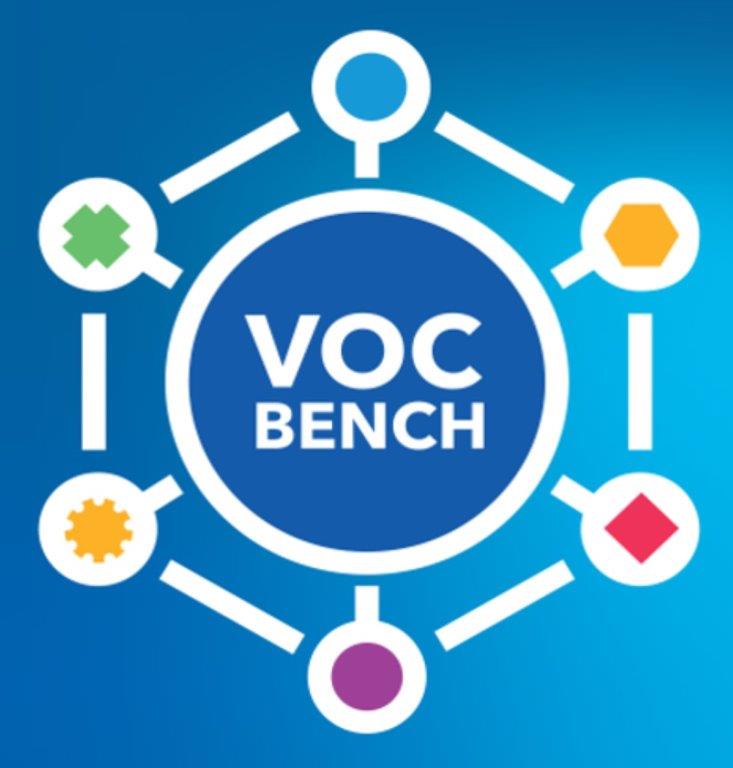
VocBench
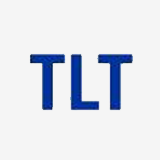
TLT - Translation, Localisation & Terminology
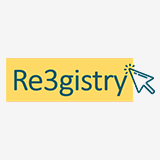
Re3gistry

Ref2Link
.png/d02738c0-a58d-4c79-438d-e4e15fa87b9e)
Expert.ai
13:15 - 13:20
Welcome and introduction
trackOrder: 10
sessionThemeOrder: 1010
time: 13:15 - 13:20
13:20 - 14:10
Keynote speech - Data quality as a risk
trackOrder: 10
sessionThemeOrder: 1010
time: 13:20 - 14:10
Participants
Muriel Foulonneau
Head of Data quality management, General Directorate of Public Finance, French ministry of economy and finance
Track 1
Using reference data and semantics
14:10 - 14:25
Corporate Reference Data Management (follow-up of 2021)
trackOrder: 20
sessionThemeOrder: 2010
time: 14:10 - 14:25
Participants

Willem van Gemert
Publications Office of the European Union, Luxembourg

Makx Dekkers
Independent Information Professional
A follow-up to the presentation entitled ʻCreating a Corporate reference data management policy for the European Commissionʼ delivered at ENDORSE 2021. This presentation will highlight the work done since the last ENDORSE conference, the ongoing work on additional code lists, on reference data governance and management best practices, the challenges and the lessons learnt.
14:25 - 14:40
ShowVoc: a Knowledge Sharing Platform for the EU
trackOrder: 20
sessionThemeOrder: 2010
time: 14:25 - 14:40
Participants

Armando Stellato
University of Rome Tor Vergata, Italy
ShowVoc is the result of an ISA2 action, PMKI (Public Multilingual Knowledge Infrastructure), aimed at supporting enterprises and in particular the language technology industry with multilingual tools and features for improving cross-border accessibility of e-Commerce solutions through the creation of a public knowledge infrastructure.
ShowVoc combines traditional data provision based on LOD policies with functionalities supporting several end user activities (e.g. global search, navigation of dataset relationships, term translation), providing both a centralized data catalog and browsing platform provided by the Publications Office of the EUfor all datasets of the EU commission and a freely downloadable and installable open source solution for any organization needing the same features for their own data. Extensively integrated with VocBench, ShowVoc is another platform developed in the context of the ISA2 initiative towards Semantic Web resources development. ShowVoc complements VocBench with functionalities for content fruition, thus realizing together a fully-fledged Semantic Web ecosystem for data management and publication.
This presentation will briefly introduce the context in which ShowVoc has been developed and the characteristics of the platform, concluding with a look ahead at the further developments of the system.
14:40 - 14:55
Caliper - Statistical Classifications in an Open Linked World
trackOrder: 20
sessionThemeOrder: 2010
time: 14:40 - 14:55
Participants

Caterina Caracciolo
Data exchange specialist, The Food and Agriculture Organization of the United Nations, ESS division

Carola Fabi
Senior statistician, The Food and Agriculture Organization of the United Nations, ESS division
The Food and Agriculture Organization of the United Nations has recently launched Caliper, a platform for the dissemination of statistical classifications based on semantic technologies. Originally conceived as an experiment to test the possibility of applying such technologies to the area of statistics, the project has now reached maturity and has grown to form a solid collaboration with the United Nations Statistics Division (UNSD).
In our presentation we will report on the latest development of Caliper, with a special focus on non hierarchically-organized classifications (such as the Land Cover Classification System, LCCS, and the World Reference Base, WRB) modelling in RDF, and their use in semantically oriented information systems.
14:55 - 15:15
Break
trackOrder: 20
sessionThemeOrder: 2010
time: 14:55 - 15:15
Towards data spaces
15:15 - 15:30
Semantic Interoperability of Legal Compliance: From GDPR to Data Spaces
trackOrder: 20
sessionThemeOrder: 2020
time: 15:15 - 15:30
Participants

Harshvardhan J. Pandit
Assistant Professor, ADAPT Centre, Dublin City University, Ireland
Following GDPR in establishing responsible data practices, the European strategy for Data creates an unprecedented vision of a single market based on data sovereignty. It is accompanied by the Data and Data Governance Acts, and the establishment of Data Spaces. However, along with benefits, these regulations also bring new challenges related to their effective enforcement.
To address these pragmatically ahead of time – we outline a paradigm shift in how legal requirements and enforcement is approached by using semantic vocabularies. We build on the foundations of existing efforts (e.g. GAIA-X, and others) – by focusing on the information necessary for achieving legal enforcement. We investigate how the changing landscape of technologically advanced ecosystems leads to handicaps in legal investigations and enforcement, and propose establishment of commonality in legal compliance information, and to not only build automated solutions, but to embed this within ‘data spaces’ to encourage legal compliance and responsible practices by design.
The work presents the outcome of W3C Data Privacy Vocabularies and Controls Community Group (DPVCG) over the past 5 years – the Data Privacy Vocabulary (DPV) that provides extensive vocabularies to assist with GDPR. To create ‘legally-aware data spaces’, we extend the DPV to address new requirements from Data Act and DGA, and demonstrate how semantic vocabularies simplify tasks and achieve legal compliance at scale by simply focusing on documentation.
Further information about the research, findings, and extending DPV to address DGA and the Data Act requirements will be presented in the full paper.
15:30 - 15:45
The Vocabulary Hub to configure data space connectors
trackOrder: 20
sessionThemeOrder: 2020
time: 15:30 - 15:45
Participants

Michiel Stornebrink
Sr. Advisor Data Sharing and Semantic Interoperability, TNO, The Netherlands
Data sharing requires participants of a data space to be able to understand each other using a common language or vocabularies. The development of vocabularies is often organized collaboratively by business communities and delegated to a standards development organization (SDO) that publishes and maintains shared domain vocabularies, schemata and API-specifications. In the IDS Reference Architecture Model (RAM), this is called the vocabulary provider, and the platform where communities publish and maintain shared vocabularies is called the vocabulary hub. The hypothesis that we address in this position paper is that a vocabulary hub should go a step further than publishing and managing vocabularies, and include features that improve ease of vocabulary use.
We propose a wizard-like approach for data space connector configuration, where data consumers and data providers are guided through a sequence of steps to generate the API-specifications for their data space connectors, based on the shared vocabularies in the vocabulary hub. Thereby bringing semantic interoperability to data spaces and enabling non-technical domain experts, i.e. people without training or experience in knowledge representation, to collaboratively design the required APIs in a matter of days. Our presentation highlights the importance of semantic interoperability for data sharing and demonstrate an implementation of such Vocabulary Hub.
15:45 - 16:00
The Common European Language Dataspace
trackOrder: 20
sessionThemeOrder: 2020
time: 15:45 - 16:00
Participants

Philippe Gelin
Head of Sector Multilingualism, DG-CNECT, European Commission
Common European Dataspaces are at the centre of the European Strategy for Data. They are meant to harness the value of data for the benefit of the European economy and society. The creation of EU-wide common, interoperable dataspaces in strategic sectors is to overcome existing legal and technical barriers to data sharing and, as such, unleash the potential of data-driven innovation.
Text, audio and video are a large part of the data produced every day. However, such data need to be aggregated and organised for AI-based language services to process and extract relevant information. Hence, the creation of the Language Data Space.
This space will have two major work strands. The first will establish an institutional Centre of Excellence for Language Technologies (CELT) which will allow for the collection, creation, sharing and reuse of multimodal language data; whilst the second strand will focus on deploying the Language Data Space by supporting the deployment of large multimodal language models and a wide range of AI language technologies services to be offered through the AI on-demand platform.
16:00 - 16:25
Break
trackOrder: 20
sessionThemeOrder: 2020
time: 16:00 - 16:25
Panel discussion
16:25 - 17:55
Panel discussion: Towards the creation of common European data spaces: technologies in practice - purposes, challenges, solutions and successes.
trackOrder: 20
sessionThemeOrder: 2030
time: 16:25 - 17:55
Participants

Federico Milani - moderator
Deputy Head of Unit, Data Policy and Innovation, DG CONNECT, European Commission

Francesco Cartella
Team Leader and Data Scientist at the European Commission

Edward Curry
Professor of Data Science and Director of the Insight SFI Research Centre for Data Analytics and Data Science Institute at the University of Galway

Philippe Gelin
Head of Sector Multilingualism, DG-CNECT, European Commission

Marc Christopher Schmidt
Policy Officer and Team Leader eProcurement at the European Commission
17:55 - 18:00
Closing
trackOrder: 20
sessionThemeOrder: 2040
time: 17:55 - 18:00
Track 2
Semantic technologies in our everyday lives - Linked data
14:10 - 14:25
Linked (Open) Data Landscape
trackOrder: 30
sessionThemeOrder: 3010
time: 14:10 - 14:25
Participants

Ivo Velitchkov
Independent consultant
There is currently no description of Linked (Open) Data solutions that would be comprehensive, user-friendly, extensible, accurate, and compliant with the Linked Data (LD) principles.
To overcome this issue the Publication Office of the EU launched a project, with the support of the European Parliament's Preparatory Action - Linked Open Data in the European Public Administration. Its goal is to create a knowledge model and technical solution for Linked (Open) Data landscaping.
The knowledge model, in the form of an ontology, has been created to collect the descriptions of solutions in a way that promotes discoverability and interoperability. In its pilot stage these included mostly EU LD solutions.
The catalogue of the Solutions will shortly become available via the European open data portal, data.europa.eu.
14:25 - 14:40
Laces Library Manager: Sharing standards and specifications as Linked Data
trackOrder: 30
sessionThemeOrder: 3010
time: 14:25 - 14:40
Participants

Gerrit Versteegh
Linked Data Consultant at Semmtech, The Netherlands

Sander Stolk
Head of Innovation at Semmtech, The Netherlands

Wouter Lubbers
Linked Data Consultant at Semmtech, The Netherlands
The Laces Library Manager is a web-based application that, amongst others, facilitates users in capturing standards (or specifications) as Linked Data in a user-friendly environment. Users are not required to be familiar with technical intricacies of Linked Data in order to work with the application and publish content as Linked Data.
The current demonstration will present the Specification Library workspaces of the application, which allow users to collaborate in capturing specifications in three ways: writing content manually, importing pre-existing structured data, and uploading PDF files in which users can select and annotate text segments. In the case of the latter, the application offers the means to extract specifications automatically through a Natural Language Processing pipeline. Specifications can subsequently be enriched by linking them to resources in ontologies or to other published Linked Data content, offering easy access to specifications through a relevant and meaningful context.
The application offers three distinct views on the content between which the user can switch freely: a PDF-view (if these are used as source material), a model view that relates specifications to relevant elements, and a tabular representation of the content. Tracing back specifications to their locations in source PDF files is part of the functionality of these workspaces, granting the user easy access to each specification’s context. Once specifications in the library are ready to be shared, the Specifications Library can be published and shared as Linked Data with the click of a button.
14:40 - 14:55
On using CPSV-AP to publish public service descriptions as linked open data
trackOrder: 30
sessionThemeOrder: 3010
time: 14:40 - 14:55
Participants
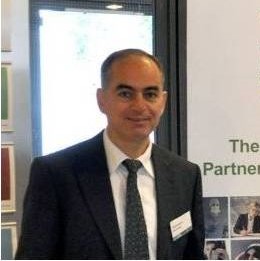
Alexandros Gerontas
PhD candidate, University of Macedonia, Thessaloniki, Greece

Efthimios Tambouris
Professor, University of Macedonia, Thessaloniki, Greece

Konstantinos Tarabanis
Professor, University of Macedonia, Thessaloniki, Greece
Public authorities worldwide provide a large number of Public Services (PS) to citizens, businesses and other authorities. In this context, they publish PS catalogues containing descriptions of these services, e.g., information about cost, required documents, contact details, etc.
Two main challenges in the design of PS catalogues are standardisation and interoperability. To address these challenges, the EU has developed the Core Public Service Vocabulary (CPSV), as the proposed EU standard for PS modelling. CPSV-AP is an application profile of CPSV that uses linked data as an underpinning technology to exploit its benefits, e.g., interlinking PS descriptions with each other and with other web of data resources. Despite its potential, however, there is only limited research on CPSV-AP use in practice.
The aim of this paper is to devise a process for using CPSV-AP and conduct a pilot implementation, using this process, to investigate potential benefits or challenges from CPSV-AP practical usage. In the framework of this pilot implementation, we publish a set of PS descriptions, included in an official PS catalogue, as CPSV-AP compliant linked data. The contribution of this paper is a detailed process for CPSV-AP use in practice and relevant lessons learnt. We anticipate this research will be beneficial to both academics working on PS semantic interoperability and practitioners aiming to migrate existing PS catalogues exploiting CPSV-AP.
14:55 - 15:15
Break
trackOrder: 30
sessionThemeOrder: 3010
time: 14:55 - 15:15
Semantic technologies in our everyday lives - Tangible impacts
15:15 - 15:30
Public Service Data and their role in Crisis prevention, Europeanisation and Security - A case study of the ECPM
trackOrder: 30
sessionThemeOrder: 3020
time: 15:15 - 15:30
Participants

Spyridoula-Anna Pappa
Research And Development Specialist
Public Service Data and their role in Crisis prevention, Europeanisation and Security - A case study of the ECPM
This study aims to spot and measure the absences of AI tools and new technology methods that can enable the small entities of the EU (municipalities and regions) to collect and examine Public Service Data.
In addition, I have attempted to address the role of semantics, language and therefore the importance of AI within a different philosophical approach related mostly to A. Gramsci and the complexity of unity and intersectionality in human’s political activities and asprirations. This is an ongoing project and at this stage it can be considered as a discussion or a research on the ECPM and the use of Data in the European Parliament (EP) sourced from municipalities and regions).
As the EP has progressively gained powers in the last decades, the life of the institution has been marked by growing complexity and the quest for increased legitimacy. The management of information has been crucial to both, flowing in a double direction: committee specialization and ever-growing public outreach. Information as output derives legitimacy from public ownership. Direct elections and evergrowing powers have not automatically increased the legitimacy of the EP. Reaching out directly to citizens, both to inform and to be informed, has become an important battleground for legitimacy in transnational Europe.
Government legislation calls for greater levels of oversight and transparency are leading public bodies to publish their raw datasets online.
15:30 - 15:45
How to use the eProcurement Ontology
trackOrder: 30
sessionThemeOrder: 3020
time: 15:30 - 15:45
Participants

Natalie Muric
Publications Office of the European Union, Luxembourg
The availability and accuracy of public procurement data are essential to ensure transparency and accountability of public spending and fight against corruption. The European Data Strategy foresees a public procurement data space that will enable the sharing and analysis of data at both European and national levels.
For data to be shared in such a way, it is important that procurement experts have a common understanding of the concepts used to represent data, so as to ensure consistency in the datasets available in the data space. At the same time, data needs to be encoded in information systems in a consistent manner to enable complex querying, provide a basis for machine learning and linking data.
Ensuring the above is not an easy job. This is where the eProcurement ontology comes in. It provides both a model containing definitions of all the concepts and their relationships in a human readable format. The human readable model is then transformed into an open, structured and machine-readable representation format that can be used for data exchange, access and reuse.
The Publications Office of the EU provides both public procurement reference data and the eProcurement Ontology. The Ontology is created by stakeholder participation, which is open and free. By working together we ensure the ontology is clearly and accurately defined. Each member providing valuable input whether from the procurement domain or technical domain to ensure that the ontology meets the requirements of both worlds.
15:45 - 16:00
The impact of 5G and Edge on data
trackOrder: 30
sessionThemeOrder: 3020
time: 15:45 - 16:00
Participants

Raf Buyle
Responsible for data and innovation at the Flemish Data Utility company, e-government strategy advisor
Data-driven devices such as smart lighting in cities or those used to optimise energy consumption in households based on the life pattern of individuals have become key in our society. There is a shift from centralised applications towards decentralised system-on-chip devices that processes the information on the edge.
The emergence of 5G will accelerate this process. This creates new challenges in terms of interoperability and data portability that must prevent users from losing control over their own data or creating a vendor lock-in. To cope with these challenges, we explore an approach using the decentralised Solid ecosystem, which is already successfully applied in client-server solutions that give users control over their own data. We have applied this method in the context of Smart Energy, specifically in a high-impact use-case related to Thermal Grids. This optimises the energy consumption of households based on personalised energy profiles processed by artificial intelligence on-the-edge and share this personal data selectively via the Solid protocol.
Our findings indicate that Solid allows rewiring the relationship between users and third-party service providers. We strongly believe that the insights from this edge-computing pilot can accelerate the challenges faced by citizens, businesses and governments that want to roll out hyper-personalised IoT services in an interoperable and GDPR-compliant way.
16:00 - 16:25
Break
trackOrder: 30
sessionThemeOrder: 3020
time: 16:00 - 16:25
Using reference data and semantics - Law as code
16:25 - 16:40
Drafting EU law in the era of AI and digitisation
trackOrder: 30
sessionThemeOrder: 3030
time: 16:25 - 16:40
Participants

Fernando Nubla Durango
Project officer, European Commission, Belgium

Willy Van Puymbroeck
Active Senior, European Commission
The underlying notion of the paper is to build on ‘machine processable legislation’, i.e., using ‘marking up legislation to enable computers to distinguish its part’ to ease the drafting of legislation.
At first, a status update on LEOS, the open-source software system for drafting legislation currently being rolled-out in the Commission. Specifically, attention will be drawn to inter-operability and the use of AKN4EU (a subset of Akoma Ntoso). Recent and planned developments will be highlighted.
Second, the paper reports on the study conducted with the University of Bologna in 2021 on ‘Drafting law in the era of AI and digitisation’ (see Drafting legislation in the era of AI and digitisation | Joinup (europa.eu) and provide an update/contextualise. The three main notions developed in the study are:
-
Law as a Platform, stressing the multi-disciplinary nature of the ‘LawTech’ domain,
-
‘Hybrid AI with human oversight’ advocating a white box approach which combines algorithmic with a data, a semantic web and document-driven methods, and
-
An ‘IT eco-system with a smart LEOS at its core’.
Within the study four use cases were piloted:
-
Data mining of corrigenda;
-
Documenting the transposition and consolidation of EU law by Member States;
-
Detecting derogations and transitory provisions; and
-
Checking digital readiness.
Moreover, the study has identified some 20 smart functionalities to help drafting law.
Third, the paper discusses the importance of the above in the overall context of digital transformation of law-making in the EU and the challenges ahead.
16:40 - 16:55
AKN4EU for consolidation. Is the cat dead or alive? Akoma Ntoso ‘MultipleVersions’ as a solution to identify relevant legal clauses
trackOrder: 30
sessionThemeOrder: 3030
time: 16:40 - 16:55
Participants

Žilvinas Bubnys
Head of consolidation and summaries of EU law sector at Publications Office of the European Union, Luxembourg

Maria Kardami
Information manager at Publications Office of the European Union, Luxembourg
AKN4EU for consolidation. Is the cat dead or alive? Akoma Ntoso ‘MultipleVersions’ as a solution to identify relevant legal clauses
Legal acts often undergo numerous amendments and corrections during their lifetime. To show which version of a legal clause is relevant at a given point in time, the Publications Office produces consolidated texts in all 24 official EU languages based on a selected date – either when the act enters into force or when it becomes applicable. However, corrigenda which correct an act with retroactive effect, conditional amendments, and different applicability dates of modifying provisions can make legislation difficult to understand because amendments and corrections can be both relevant and irrelevant at a given point in time, depending on the user’s perspective. Just like Schrödinger’s cat – both dead and alive at the same time.
To overcome this ambiguity, the Publications Office has used the semantic capabilities of the Akoma Ntoso OASIS Standard, as adapted to EU legislation requirements. In practice, a ‘MultipleVersions’ document is produced for each basic act that is modified combining the original content of the act and the text of all modifications as introduced over time. Each original and modified structural element is uniquely identified by the European Legislation Identifier (ELI), while detailed semantic annotation of each modification using controlled lists and reference data enable semantic interoperability and unequivocal machine processing. In this model, all possible dates of amendments and corrections are described in a dedicated metadata section. This allows to generate a ‘SingleVersion’ document based on the user’s selected date and type of date, which is the relevant consolidated text according to the user’s perspective.
16:55 - 17:10
From Regulation to Knowledge
trackOrder: 30
sessionThemeOrder: 3030
time: 16:55 - 17:10
Participants

Veronika Heimsbakk
Managing AI Engineer, SME Semantic Technologies - Insights & Data, Capgemini, Norway
At the Norwegian Maritime Authority (NMA) there was a need for replacing their legacy supervision system. The purpose of the new solution is to facilitate interaction between all stakeholders that are involved in ensuring that a vessel is compliant with relevant regulations.
The new implementation should rely on machine readable, linked data, reflecting current and historic regulations. We discover context and relationships in regulations using Natural Language Processing (NLP) techniques, and transform these findings into RDF. In addition we also perform graph enrichment using tools as Reasonable Ontology Templates. All data models rely on the Shapes Constraint Language (SHACL), not only for validation purposes.
We believe that the closed world aspect of SHACL is closer to real life problems as for legislation data, and this talk will demonstrate to you why.
17:10 - 17:25
Policy building through semantics interoperability simulations
trackOrder: 30
sessionThemeOrder: 3030
time: 17:10 - 17:25
Participants

Sabrina Medeiros
Assistant Professor at Lusófona University in Lisbon, Researcher at the InterAgency Institute
Policy building depends on efforts that can include multistakeholder participation and effectiveness analysIt. It seems challenging to progress policy compliance without considering the embedded functional aspects due to the complexity associated with the various levels of policy engagement under a regime such as the EU.
In this respect, simulations have been used for decades to enhance policy engagement and train practitioners to permit policy testing and incremental developments.
This proposal is based on semantic analysis to absorb complexity and amplify the chances of crossnational impact towards EU member states, benefiting smooth policy guidance and an integrated community. For this, we propose that simulations can be part of policy-building schemes to promote a better common and integrated understanding of the concepts involved in an incremental policy process. Our primary focus is building simulations through a specific management software considering semantic interoperability as an essential variable.
17:25 - 17:40
Towards a holographic architecture using semantic technologies: norm engine
trackOrder: 30
sessionThemeOrder: 3030
time: 17:25 - 17:40
Participants

Flores Bakker
Enterprise Architect for the Dutch ministry of Finance
Norms are used to guide, trigger, monitor, validate and enforce any behavior in society. Norms can be found everywhere: legislation, business contracts, ethical norms, agreements and more. Think of the GDPR, business contracts, ethics in health care, game rules, cookie requests and your occasional traffic fine.
Given the importance of norms, digitalisation should thus be able to handle norms. Digitalisation needs a norm engine that can model norms like laws or business contracts, can apply them to use cases, effect state changes under compliant behavior and handle violations. This should be available in a conscientious manner, offering auditability and explainability for every stakeholder and maintainability in the face of change. The norm engine should be able to handle disputes and conflict resolution in a transparent way. We will show that we can implement all this based on semantic web technology.
17:40 - 17:55
EUR-Lex Legal Analysis Methodology
trackOrder: 30
sessionThemeOrder: 3030
time: 17:40 - 17:55
Participants

Juraj Kuba
Legal Assistant at Publications Office of the European Union
EUR-Lex Legal analysis methodology (LAM) defines and describes the use of metadata elements that are relevant for the legal and documentary analysis of the legal documents published in the Official Journal of the European Union and on EUR-Lex website. The attributes used cover the publication and descriptive metadata, both representing the legal data typical for the Legal Domain, but with a particular focus on EU Law and its specificities.
Additionally, LAM also defines classes of EU legal documents according to the hierarchy of norms in EU Law and provides a selection of metadata elements that are determinative or suitable for every class, incl. cardinality and values constrains.
The metadata elements employed by LAM refer to formal properties in the Common Data Model (CDM) of the resources published by the Publications Office. CDM is a FRBR based ontology described by using RDF(S)/OWL technologies.
This presentation informs about the project aiming to transpose LAM from a plain text into a formal LAM ontology (expressed in OWL2 language) and into a set of formal data shapes (expressed in SHACL language).
The goal is to (a) enable an easy access to LAM, quick navigation through its content and interactive maintenance by creating (for example) a standalone LAM web application, (b) checking the consistency of LAM where the model should be able to identify potential internal conflicts, (c) automatic validation of the document descriptions attributed by the legal analysis and (d) potential automation of the legal analysis process.
Concerning the last goal, LAM can substantially contribute to such automation, but only a real interoperability between LAM, CDM and proper markup ontology (AKN4EU), supported by additional involvement of other technologies (for example text mining) can lead to significant results.
17:55 - 18:00
Closing
trackOrder: 30
sessionThemeOrder: 3040
time: 17:55 - 18:00
Time mentioned corresponds to the Central European Time (CET)
Please follow possible updates
12:15 - 13:15
Demos
trackOrder: 10
sessionThemeOrder: 1010
time: 12:15 - 13:15
Participants
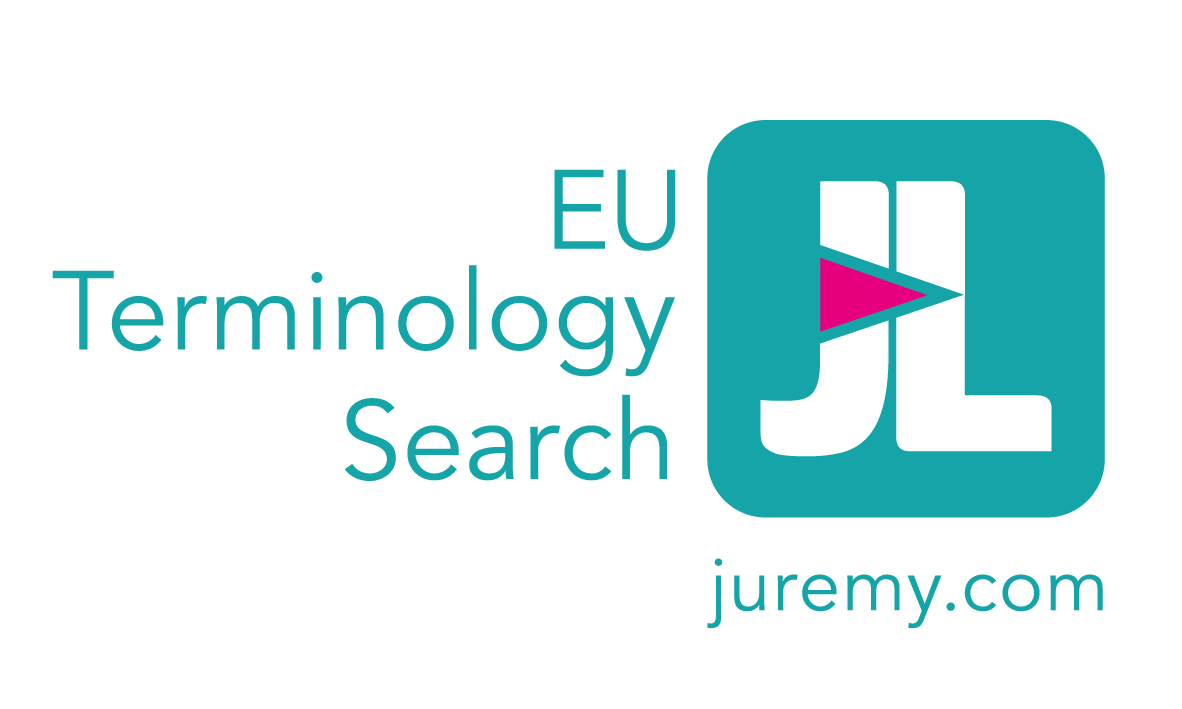
Juremy
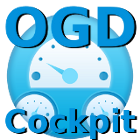
OGD Cockpit

Caliper
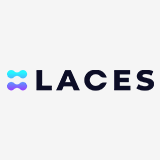
Laces
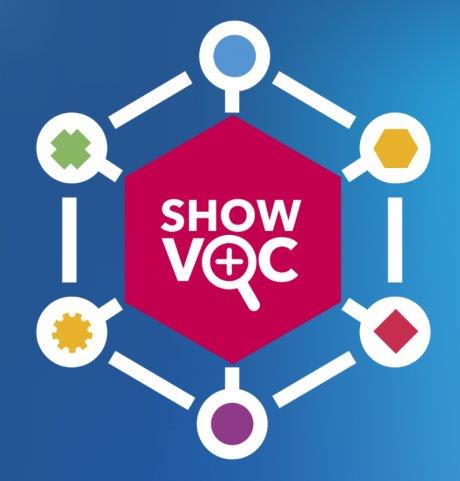
ShowVoc
13:15 - 13:20
Welcome and introduction
trackOrder: 10
sessionThemeOrder: 1010
time: 13:15 - 13:20
13:20 - 14:10
Keynote speech - Semantic interoperability at W3C. What's there? What's missing? What's coming?
trackOrder: 10
sessionThemeOrder: 1010
time: 13:20 - 14:10
Participants

Pierre-Antoine Champin
Data strategist W3C/ Inria
Track 1
Using reference data and semantics
14:10 - 14:25
Easily sharing reference data with Re3gistry
trackOrder: 20
sessionThemeOrder: 2010
time: 14:10 - 14:25
Participants

Juan Martin Pelegrina
Bilbomatica, in service contract with the European Commission Joint Research Centre

Lorena Hernandez

Jordi Escriu
The Re3gistry software is a reusable open-source solution for managing and sharing ‘reference codes’ through persistent URIs. Licensed under the EUPL, the European Commission Joint Research Centre started its development to satisfy the interoperability requirements set by the INSPIRE Directive, and continued supported under the ARE3NA and ELISE interoperability actions, funded under the ISA2 and currently the DIGITAL Europe Programme.
This presentation will show the audience how the Re3gistry software can be used to make reference codes available to the public in a few minutes, while ensuring a formal content management, even in complex governance settings.
Key functionalities of the system will be shown, such as the manual editing mode and batch import functionality, the traceability and versioning mechanism, groups and users management, streamlined content publication, API capabilities, and the different governance modes supported, including the recommended workflow to manage external contributions.
14:25 - 14:40
Simplifying the reuse of concepts across organisations
trackOrder: 20
sessionThemeOrder: 2010
time: 14:25 - 14:40
Participants

Fabian Santi
Interoperability specialist, Swiss Federal Statistical Office (SFSO), Switzerland
The National Data Management (NaDB) is a programme launched by the Swiss Federal Council to create the foundation for the implementation of the Once Only Principle. The long-term goal is to align the federal data landscape in such a way that persons and businesses will no longer have to report any information more than once.
Within this program, the Swiss Federal Statistical Office (FSO) is in charge of developing and maintaining an Interoperability Platform (IOP). The Interoperability Platform went live in its first version in mid-2021 and is continuously being developed and expanded. One of the aims of the platform is to provide a centralized metadata repository that facilitates the reuse of standardized nomenclatures. This use case will focus on the technical and organizational aspects needed to promote the harmonisation and reuse of standards.
Technically, nomenclatures are published in a DCAT catalog and made accessible via APIs. Our multilingual platform allows the reuse of concepts and nomenclatures as data elements to describe different kind of dataset structures. This explicitly shows which organisations are endorsing the standard nomenclature and what data is not yet harmonised and thus not interoperable.
For each organisation joining the platform, which could be both from the public and private sectors, we ask to nominate a Data Steward in charge of maintaining the concepts. Each nomenclature is attributed a status according to ISO 11179 to show its progress on the registration process, and can be promoted in accordance with the Swiss Data Steward.
14:40 - 14:55
Driving a successful Digital Strategy - 360 degree Application of FAIR principles for Data Harmonization and Standardization
trackOrder: 20
sessionThemeOrder: 2010
time: 14:40 - 14:55
Participants

Martin Romacker
Data & Analytics Roche Innovation Center Basel
Driving a successful Digital Strategy - 360 degree Application of FAIR principles for Data Harmonization and Standardization
The Pharma Industry has broadly adopted the notion of FAIR Data. However, FAIR (findability, accessibility, interoperability, and reusability) is seen very much in isolation and not so much in the context of a Digital Strategy driving the digital transformation in Healthcare and Life Sciences. FAIR applications, services and data are an indispensable prerequisite to becoming data-driven but the implied disruption of the way we work in Informatics based on FAIR ontologies, data schema definition and terminologies has not yet been perceived or even acknowledged. The technical transformation has to be complemented by a data culture based on data mastery and data literacy clearly defining ownership of data, data products and data related processes.
This presentation gives an overview of where we are in the journey as an industry and how we can get FAIR into the DNA of our organization to implement a 360 degree FAIRification of our data landscape. The presentation will cover both a business oriented perspective as well as required capabilities for reference data services.
14:55 - 15:15
Break
trackOrder: 20
sessionThemeOrder: 2010
time: 14:55 - 15:15
Panel discussion
15:15 - 16:45
Panel discussion: Agreeing on standards and standards to come
trackOrder: 20
sessionThemeOrder: 2020
time: 15:15 - 16:45
Participants

Jef Vlegels - moderator
Secretariat-General, European Commission

Stephen Abbott Pugh
Head of technology, Open Ownership

Pierre-Antoine Champin
Data strategist W3C/ Inria

Makx Dekkers
Independent Information Professional

Gernot Friedrich
Headquarters NATO - Digital Staff, co-Chair CIS CaP and Head Information and Data Management Branch
16:45 - 17:10
Break
trackOrder: 20
sessionThemeOrder: 2020
time: 16:45 - 17:10
Closing
17:10 - 17:25
Panels conclusions and recommendations
trackOrder: 20
sessionThemeOrder: 2030
time: 17:10 - 17:25
17:25 - 17:35
Interaction with the Programme Committee
trackOrder: 20
sessionThemeOrder: 2030
time: 17:25 - 17:35
17:35 - 18:00
Closing speeches
trackOrder: 20
sessionThemeOrder: 2030
time: 17:35 - 18:00
Participants

Franck Noël
Data, Information and Knowledge Management Services Director at Publication Office of the European Union

Natalia Aristimuño Perez
Digital Services Director at DG DIGIT, European Commission
Track 2
Semantic technologies in our everyday lives - Tangible impacts
14:10 - 14:25
Semantic technologies: a transformative approach in public libraries
trackOrder: 30
sessionThemeOrder: 3010
time: 14:10 - 14:25
Participants

Asmaa Bouaamri
Institute of Library and Information Sciences, Eötvös Loránd University, Budapest, Hungary
The contemporary technological advancements have changed how people access and use information. These changes were necessitated by the introduction of the internet and the World Wide Web. Currently, most library users are interested in instant access to information and not the procedure, interested in prompt feedback and not procrastination. Semantic technologies seem to be a solution to the prevailing problem, however, the uptake has not been impressive among libraries. Semantic technologies can assist library users in prompt searching and retrieval of information with minimum bureaucratic procedures. Semantic tools ensure that every library search query is meaning defined, unlike with the conventional library systems.
This presentation discusses the importance of semantic technologies in public libraries and how these technologies can be implemented for easy-to-use tools and applications for public library users. The research paper explores the benefits of semantic technologies for searching and processing data in the everyday life of library users. In addition, the presentation sheds light on the challenges that public libraries may face when introducing semantic technologies to their users, as well as the social and cultural constraints that make their implementation elusive.
14:25 - 14:40
The Advantages of the ESPD-EDM
trackOrder: 30
sessionThemeOrder: 3010
time: 14:25 - 14:40
Participants

Paloma Arillo Aranda
Knowledge Management Assistant, Publications Office of the European Union, Luxembourg
The European Single Procurement Document was introduced in the public procurement Directive 2014/24/EU to ease exchanges between buyers and tenderers. The ESPD is a self-declaration whereby tenderers declare they fulfil exclusion grounds and selection criteria. Only the winning tenderers need to provide documentary proof of eligibility.
The ESPD-EDM is the model that allows authorities to integrate the ESPD into their own tools and systems. These procurement systems can in turn be interconnected with eCertis, so both buyers and tenderers know exactly which certificates have to be provided by winning tenderers. This is especially helpful in the case of cross border tenders.
Connecting ESPD services, eCertis and national registries can enable buyers to check the eligibity of tenderers directly (depending on permissions), which greatly reduces the administrative burden on both buyers and tenderers, in particular SME’s.
The work managed by the Publications Office of the EU and funded by DEP on the ESPD-EDM continues to evolve with the core vocabularies, e-Certis, eForms and the eProcurement ontology. The interconnection of these artefacts provides the semantic base required for the interoperability and reuse of data across procurement systems within the Single Digital Market.
14:40 - 14:55
Promoting Data-Solution Systems for Local Levels of Armenia and Georgia to Provide Internationalization through Spatial Administration
trackOrder: 30
sessionThemeOrder: 3010
time: 14:40 - 14:55
Participants

Sos Khachikyan
Associate Professor, Dean of the Faculty of Computer Science and Statistics, Armenian State University of Economics, Armenia

Marina Razmadze
Associate Professor, Head of the Research Projects and Innovations Office, International Black Sea University, Georgia
Promoting Data-Solution Systems for Local Levels of Armenia and Georgia to Provide Internationalization through Spatial Administration
Regarding the evolving and changing societal demand in the context of (1) the potential long-term impacts of the Corona Virus Disease 2019 (COVID-19), (2) the uncertainty on opening the logistic and communication infrastructure after the Nagorno Karabach 2nd war, and (3) emerging technological developments, the proposed paper aims to support good governance and addresses policymakers of internationalization on local levels. This requires the identification of dynamic decision-making needs and demands of local actors and society as well as the facilitation of efficient and impactful policy decisions about cooperation and partnership.
The paper focuses on identifying spatial administration tools needs and the potential responses through modernization in the sense of data-driven solutions to achieve internationalization, as well as social, economic, and ecological sustainability by supporting policymakers.
Within this paper, the methods, tools and activities will be described for local governance bodies of Armenia to provide spatial administration as part of their actions. Data-driven approach will be used by the local actors, including municipalities and civil society organizations, to support inter-municipal cooperation in order to hence into new levels of public modernization. Moreover, the digitalization of the local governance systems of Armenia will create an improved environment of internationalization and competitiveness.
The paper intends to develop local area governance knowledge for policymakers to provide (1) public modernization at local levels, (2) data-driven strategic development on internationalization, and (3) the establishment of spatial partnerships and cooperation concepts based on common approaches and global connectivity.
14:55 - 15:15
Break
trackOrder: 30
sessionThemeOrder: 3010
time: 14:55 - 15:15
Linked data
15:15 - 15:30
Linked Data Event Streams: adoption and tooling
trackOrder: 30
sessionThemeOrder: 3020
time: 15:15 - 15:30
Participants

Pieter Colpaert
Professor Knowledge on Web-Scale at Ghent University - IDLab - imec
15:30 - 15:45
OGD Cockpit - Managing a data catalog with Semantic MediaWiki
trackOrder: 30
sessionThemeOrder: 3020
time: 15:30 - 15:45
Participants

Bernhard Krabina
Managing partner at KM-A Knowledge Management Associates
The preparation and management of open data initiatives obliges organizations to compile an internal data catalog and document the status, structure and details about data that is about to be published on open data portals.
Data portal software (CKAN being the most prominent one) often lack capabilities of documenting internals of comprehensive data catalogs, including data that probably will never be published, and supporting the processes around preparation and publishing.
The OGD Cockpit is a solution based on open source software. It is an example of how Semantic MediaWiki (SMW) can be used for managing semantically enriched content, re-using the DCAT-AP vocabulary. The OGD Cockpit implements the process of collecting information about datasets including eight criteria for internal data monitoring as described in the Open Government Implementation Model.
In the presentation, the OGD Cockpit will be shown and the general capability of making use of DCAT-AP (or other) vocabulary in SMW will be demonstrated.
Semantic MediaWiki (SMW) is an open-source knowledge management system built around the ecosystem of MediaWiki (the wiki software that powers Wikipedia). The strengths of MediaWiki as open-source wiki engine, collaboratively adding internal documentation around datasets is enhanced by semantics. Together with other open-source-extensions SMW can be built into a tool for managing and maintaining internal data catalogs in internal systems and providing the metadata to be harvested by open data portals which can then consume the disclosed part of the catalog.
15:45 - 16:00
VINALOD – Visualisation of linked open data
trackOrder: 30
sessionThemeOrder: 3020
time: 15:45 - 16:00
Participants

Simon Steuer
Head of sector, Publications Office of the European Union, Luxembourg

Hagar Lowenthal
Knowledge Management Assistant, European Commission, Joint Research Centre

Teresa Barrueco
Expert in the domain of data visualisation
Open dissemination of public administration data is critical to ensure transparency and accountability of policy actions and empower citizens in democratic processes. While much of EU data is available in textual format, the Publications Office of the EU has also made openly available most of this structured data using web semantic technologies and links in graphs using linked open data (LOD).
However, for end-users, including experts, linked open data is still difficult to navigate. Users have little knowledge of the richness of EU data because the existing web interfaces show very few links between collections and non-official data (e.g., Wikidata). This prevents broader use of the linked open data.
To overcome the issue, the tool VINALOD (Visualisation and navigation of linked open data) offers a user-friendly and intuitive visual data exploration tool that allows to navigate directly in knowledge graph and therefore to be able to see links between collections.
With the VINALOD tool, you can explore LOD without the necessity to know SPARQL syntax or data models and ontologies of different datasets. It allows you to explore this big amount of information and quickly get an idea of what is ‘important’ and ‘significant’ as well as display the data in different ways and navigate between elements of the graphs.
16:00 - 16:15
Network of Terms - bringing links to your data
trackOrder: 30
sessionThemeOrder: 3020
time: 16:00 - 16:15
Participants

Enno Meijers
CTO Dutch Digital Heritage Network and Advisor Research dept. National Library of the Netherlands
Linked Data needs links to shared definitions for places, person, topic, events, and so on. At the Dutch Digital Heritage Network (NDE) we developed a finding aid for registrations system which helps data maintainers to quickly find URIs for the strings in their data. This generic tool, the Network-of-Terms, uses SPARQL to search in real time for relevant definitions in multiple sources. It offers a GraphQL API for implementation in registration systems and a Reconcilation API for bulk processing. It is already implemented in a number of commercial and open source collection management systems.
In the Dutch Digital Heritage Network (NDE) we encourage cultural institutions to publish their data as Linked Data and assign standardized terms to their digital heritage information. It is quite a challenge for institutions to reuse these terms because the sources in which the terms are managed — such as thesauri and reference lists — have different API protocols and data models.
The Network of Terms removes these barriers. It is a service that searches Linked Data sources in a federative way. It has a unified GraphQL API that institutions can query using SKOS. It then searches the terminology sources for matching terms – real time, with SPARQL. We think the Network of Terms has potential for use in other Linked Data oriented domains and we would like to present our tool to the audience.
16:15 - 16:30
The solution approach of DIGIT for ICT vendor lock-in
trackOrder: 30
sessionThemeOrder: 3020
time: 16:15 - 16:30
Participants

Raúl M. Abril
Project officer at European Commission DG DIGIT D2
One important problem that affects Public Administration is the effect "vendor lock in". This is the situation created by the acquisition of products and services that are heavily dependent of proprietary solutions, i.e. non-standard. Moreover, this effect is tightly related to legal and organisational constraints that have a strong impact on the Digital Public Services consumed by the Administrations to the citizens and businesses.
The Interoperable Europe Action has developed four solutions that can be seen as fundamental reference data for portfolio managers, ICT procurers, solution architects and inspection bodies to check what solutions fit best their purposes and are aligned with the European strategies and Law.
These four solutions (and Solutions-as-Services) are CAMSS (Common Assessment Method for Standards and Specifications), EIRA, eGovERA and ELIS (the EIRA Library of Interoperability Specifications, which links standards to building blocks and to assessments).
The use of these products/services of the European Commission by the Member States has been accumulating reference data and rich datasets that are publicly available from the Publications Office of the European Union.
16:30 - 16:45
European statistical classifications as Linked Open Data. A successful collaboration by Eurostat and the Publications Office of the European Union
trackOrder: 30
sessionThemeOrder: 3020
time: 16:30 - 16:45
Participants

Christine Laaboudi-Spoiden
Statistical Assistant, Eurostat

Denis Dechandon
Head of Reference Data and Style Guide sector at the Publications Office of the European Union
European statistical classifications as Linked Open Data. A successful collaboration by Eurostat and the Publications Office of the European Union
The European Data Strategy describes the vision of a common European data space, in which data could be used irrespective of its physical location of storage in the European Union in compliance with applicable law.
The presentation illustrates a use case depicting a successful collaboration between two directorate-generals of the European Commission with positive and reusable results for the benefits of the statistical community and beyond.
Eurostat has a high level of knowledge and experience in the development of classifications and is the custodian of several sectoral and transversal European statistical classifications.
Since the early 2000s, statistical classifications and their correspondence tables used to produce European Statistics had been disseminated via RAMON, the “Eurostat Reference And Management of Nomenclatures” platform. Alongside the phasing-out of the platform hosting RAMON, Eurostat seized the opportunity converting its statistical classifications into RDF format and exposing them as Linked Open Data by the means of corporate semantic tools offered by the Publications Office of the European Union (OP) to make them widely reusable by the stakeholders in the European Statistical System.
On the other hand, OP proposes a set of services for the creation and maintenance of controlled vocabularies, and uses the Cellar, a common data repository to store and disseminate digital publications and metadata to be used by humans and machines. While the Cellar is based on semantic technologies, most controlled vocabularies used at OP and beyond are maintained, stored, disseminated and visualised using semantic applications further developed under the lead of OP.
16:45 - 17:10
Break
trackOrder: 30
sessionThemeOrder: 3020
time: 16:45 - 17:10
Closing
17:10 - 18:00
Closing of the conference - please follow on track 1
trackOrder: 30
sessionThemeOrder: 3030
time: 17:10 - 18:00
